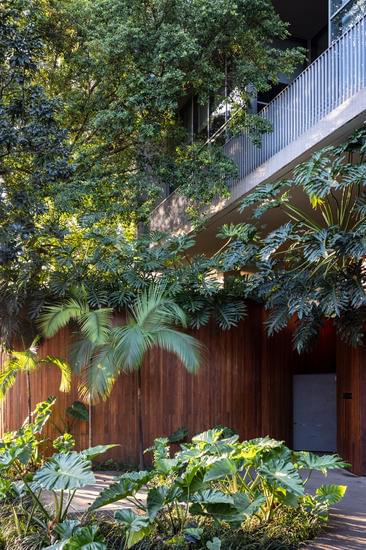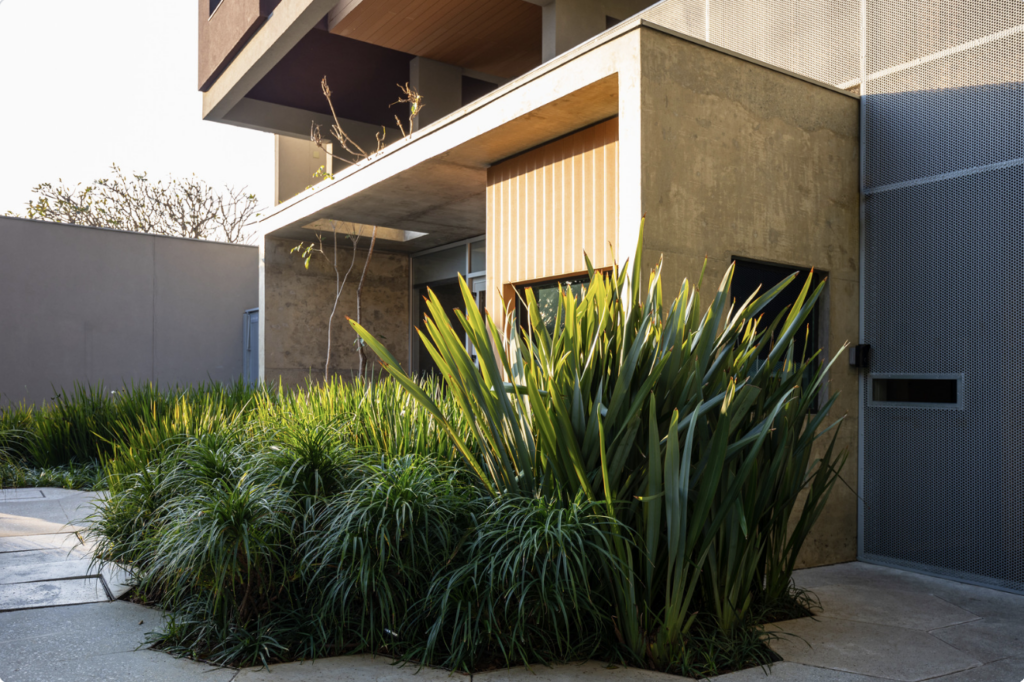In architecture, this approach is used to create a deeper connection between people and the natural world, which has been shown to positively affect health, mood, and productivity.
The idea of integrating nature into buildings is not new. Ancient civilizations, such as the Romans, often designed villas and spaces that harmonized with their natural surroundings. The concept of gardens in Japanese culture also reflects this connection. However, biophilic design has gained renewed importance in recent decades due to rapid urbanization and a growing desire to maintain natural elements within modern built environments.
Modern architecture has often created a division between indoor spaces and nature, which can have negative impacts on mental well-being. Biophilic design addresses this issue by reintroducing nature into everyday spaces. Research has shown that incorporating natural elements can reduce stress, increase concentration, and generally improve quality of life. Biophilic design offers a way to create healthier, more balanced environments for both individuals and communities.
- Core principles of biophilic design
- Benefits
- Biophilic design in practice
- Challenges and considerations
- Conclusion
Core principles of biophilic design
Natural Light
Natural light is one of the most essential elements in biophilic design. It influences our mood, regulates our circadian rhythm, and helps create an inviting, vibrant atmosphere. Large windows, open floor plans, and skylights are commonly used to maximize daylight and bring a sense of openness and freedom to interiors. Well-lit spaces improve mental health and productivity, making them crucial for homes and workplaces alike.
Use of Natural Materials
Materials that are directly sourced from nature, such as wood, stone, and clay, not only introduce natural textures but also impart warmth and authenticity to a space. These materials help create environments that feel grounded and timeless, adding to the emotional connection that users develop with their surroundings. Natural materials also contribute to the sustainability of buildings, making them a key aspect of biophilic design.
Indoor-Outdoor Connection
A key principle of biophilic design is the connection between interior spaces and the outdoors. This can be achieved through architectural features such as large windows, sliding doors, or indoor gardens that provide direct views and access to natural landscapes. This connection fosters a sense of openness and tranquility, allowing occupants to experience nature even when inside a building.
Vegetation and Green Spaces
The inclusion of plants, trees, and green spaces inside buildings is another hallmark of biophilic design. Green walls, potted plants, and indoor gardens bring the calming effects of nature indoors and help purify the air. Research has demonstrated that even the presence of plants can reduce stress levels and increase creativity, making them an invaluable element of both residential and commercial spaces.
Water Features
Water is an element that evokes peace and serenity. Biophilic design often incorporates water features such as fountains, ponds, or streams into spaces. The sound of flowing water has been shown to have a calming effect, promoting relaxation and reducing anxiety. Water features also contribute to a building’s aesthetic, creating dynamic visual and auditory experiences.
Benefits of biophilic design
Improved Wellbeing
Biophilic design has been shown to improve mental health by reducing stress and promoting relaxation. Natural elements, such as plants, natural light, and water features, provide a sense of calm and well-being, contributing to a healthier environment. Studies suggest that spending time in spaces designed with biophilic principles can lower heart rates, improve focus, and increase overall happiness.
Increased Productivity
In office environments, biophilic design can lead to significant improvements in productivity. Access to natural light and views of nature has been linked to higher employee satisfaction, lower absenteeism, and better overall performance. Biophilic design creates more engaging and comfortable spaces that can enhance focus, creativity, and problem-solving abilities.
Environmental Impact
Biophilic design can also contribute to the environmental sustainability of buildings. By incorporating natural elements, such as green roofs and energy-efficient building materials, biophilic architecture helps reduce a building’s ecological footprint. Additionally, the integration of plants and green spaces can help combat urban heat islands and contribute to biodiversity in urban areas.
Biophilic design in practice
Many well-known buildings around the world have embraced biophilic design. One notable example is the Eden Project in Cornwall, UK, which features expansive biomes housing plant species from different global climates. Another example is Singapore’s Gardens by the Bay, which combines cutting-edge architecture with nature through its Supertree Grove and flower domes. These projects demonstrate how biophilic design can be successfully integrated into large-scale developments.
Several recent architectural projects have pushed the boundaries of biophilic design by incorporating modern technology. Smart buildings now integrate natural elements such as automated shading systems, green roofs, and energy-efficient building materials to create sustainable, nature-connected spaces. These projects are setting the stage for the future of biophilic architecture, combining environmental responsibility with cutting-edge design.

Challenges and considerations
Design Limitations
Implementing biophilic design can sometimes be challenging, particularly in dense urban areas where space for natural elements is limited. Additionally, not all climates are conducive to incorporating nature indoors, and the costs associated with installing biophilic elements can be high. However, with careful planning and creative solutions, these challenges can be overcome.
Balancing Nature with Functionality
While nature can enhance the aesthetic appeal of a building, it is important to balance it with the functionality of the space. For example, integrating natural elements must not compromise the usability or efficiency of the building. Thoughtful planning ensures that both beauty and function are harmoniously combined.
Cost and Accessibility
The initial cost of incorporating biophilic elements into a building’s design can be higher compared to traditional construction methods. However, the long-term benefits—such as increased energy efficiency, lower healthcare costs, and improved productivity—often outweigh these costs. As the demand for biophilic design grows, these practices may become more accessible and affordable for a wider range of projects.

Conclusion
Biophilic design offers an exciting and impactful approach to architecture by blending the natural world with modern built environments. Its core principles—natural light, the use of natural materials, indoor-outdoor connections, vegetation, and water features—contribute to healthier, more sustainable living and working spaces. The benefits are clear: improved well-being, increased productivity, and a positive environmental impact.
The future of biophilic design looks promising, with increasing integration of technology and sustainability driving innovative solutions. As more architects and designers embrace biophilic principles, we can expect to see nature become an even more integral part of architectural design. Whether it’s through green roofs, indoor gardens, or the use of natural materials, biophilic design has the potential to transform the way we live and work.
Architects, designers, and developers are encouraged to incorporate biophilic elements into their projects. By fostering a deeper connection between people and nature, biophilic design can enhance the quality of life for individuals and communities, creating spaces that are not only beautiful but also supportive of our physical and mental health.








